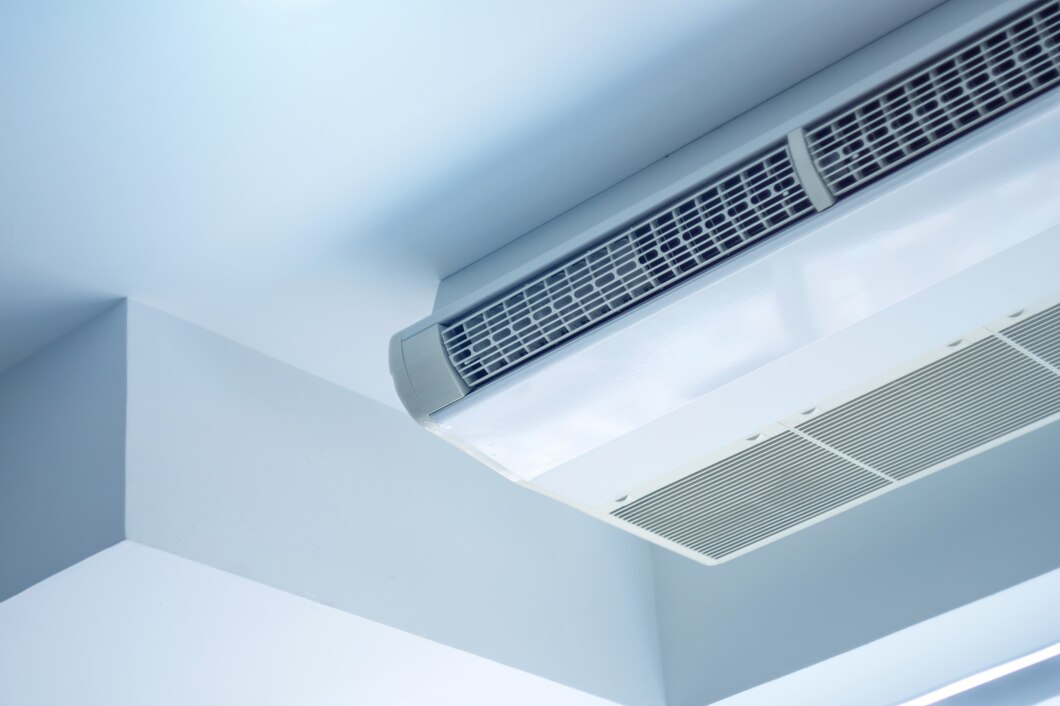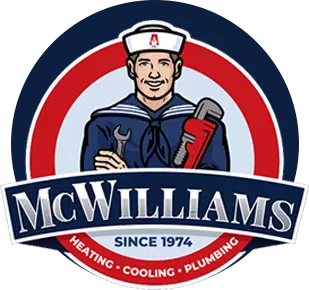Blog
Introduction
Air-Source Heat Pumps vs. Geothermal Systems: What You Should Know. If you’ve been searching for an alternative way to heat and cool your home, you’ve probably heard about heat pumps. These systems provide a cost/efficiency combination that furnaces and air conditioners cannot match. The two main types of heat pumps are air-source heat pumps and ground-source geothermal systems. Both are appropriate for almost any size home in a Texas climate, and both will produce plenty of cooling and heating throughout the year.
Air-Source Heat Pump vs. Geothermal System: The Basics
Heat pumps do not generate heating or cooling energy. They work on the principle of capturing existing heat and moving it from place to place. A heat pump absorbs heat from inside your home and removes it to provide cooling. When heating is needed during the winter, the heat pump captures heat from an outdoor source and brings it into your home to warm it. This transfer of heat is what makes heat pumps so efficient and cost effective as home comfort equipment.
Air-Source Heat Pump Function
Air-source heat pumps capture and release heat from the air around the equipment. It can pull heat even from cold winter air. An air-source heat pump contains five main components: the condenser, evaporator, compressor, air handler and reversing valve. The system contains two sets of copper coils, which are pipes or tubes containing a liquid refrigerant. One set of coils is installed inside your home and the other is installed outside in the cabinet that contains the majority of the system’s components.
During heating operations, the liquid refrigerant in the outdoor coils evaporates into a gas. As it does so, it absorbs heat from the outdoor air. The gaseous refrigerant is circulated through the coil system to the indoor coils. Once in your home, the gaseous refrigerant is condensed back into a liquid. As it changes state, the refrigerant releases the heat it has absorbed. The air handler, consisting of a powerful fan, then pushes the heated air into the ductwork and out into your home’s interior.
When cooling, the reversing valve switches the direction of refrigerant flow. The refrigerant in the indoor coils captures heat while evaporating into a gas. The heat is moved out of your home, where it is dispersed outside when the gaseous refrigerant returns to its liquid state in the outdoor coils.
Geothermal Heat Pump Function
Ground-source geothermal heat pumps use heat energy stored in the ground to provide a source for heat capture and release. Sunlight on the soil creates conditions in which the ground, at a depth of about six to 10 feet, stays between 45 and 60 degrees year-round, no matter how hot or cold it gets on the surface. The consistency of the underground temperatures provides an efficient and reliable environment for heat transfer.
Heat transfer occurs in a network of pipes buried in the ground at the depth where temperatures remain the same. Called the ground loop, this large network requires considerable horizontal ground space for installation. The loop is buried on a flat plane within several trenches dug into the ground. In cases where there is limited space available for loop installation, the pipes can be stacked horizontally, or if needed, installed vertically in deep holes drilled into the ground. The holes are usually between 400 and 600 feet deep and are spaced about 20 feet apart. Vertical loop systems are often used in urban settings, where the topsoil is thin or rocky, or where there are layers of solid rock underneath a thin layer of topsoil.
A geothermal system works on principles similar to that of an air-source heat pump, but there is no converting of refrigerant from state to state. Instead, the heat transfer medium is usually water or a liquid solution that can easily capture and release heat. The heat-transfer solution captures heat from the ground and brings it in to your home and into the indoor unit. This unit contains the heat exchanger and air handling system. It uses a relatively small amount of electricity during both heating and cooling. The heat in the solution is absorbed by heat exchanger. The air handler then blows air over the heat exchanger. The air is warmed and proceeds into the ducts and into your home. During cooling, heat is absorbed from inside your home and released into the ground from the loop outside.
Sizing Air-Source Heat Pumps and Geothermal Systems
Every structure has a heating and cooling load, which is the amount of heating or cooling needed to keep the space at temperatures preferred by the occupant. Both air-source and geothermal heat pumps need to be properly sized, with the performance capacity to provide enough heating and cooling to meet this load. When you know the building’s load, you and your HVAC professional can find equipment with the right capacity to accommodate it.
Load calculations should be performed by an expert using industry-accepted standards and procedures. The most common source for load calculations is Manual J, “Residential Load Calculation,” a technical handbook published by the Air Conditioning Contractors of America. The calculation will require a physical assessment of your home to determine factors such as local climate, size, directional orientation, number of windows, amount of insulation and quality of seal. Your consultant will enter this information into a sophisticated computer program that performs the calculations and generates a detailed report on the building’s load.
Air-Source Heat Pump vs. Geothermal System: The Benefits
- Extremely high efficiency: Both air-source and geothermal heat pumps are extremely efficient. The U.S. Department of Energy (DoE) indicates that air-source models can produce heating efficiency levels of up to 300 percent, while geothermal systems can reach efficiencies of 400 to 500 percent. This is possible because they do not burn fuel or use electricity to produce heat. Check the system’s EnergyGuide label for details on efficiency. You should also make sure the unit bears the Energy Star label, a government-level certification of high efficiency. An air-source heat pump should have a Heating Season Performance Factor (HSPF) of at least 7.7 and a Seasonal Energy Efficiency Ratio (SEER) between 14 and 18.
- Low cost of operation: The high efficiencies of heat pumps mean that they will cost less to operate in both winter and summer. Typically, air-source models can reduce energy expenses by around 30 percent, while geothermal models can slash monthly costs by 50 percent. These significant savings mean the initial cost of the equipment and installation can be recovered by about the halfway point of the system’s expected lifespan.
- Consistent indoor comfort: Heat pumps are known for their ability to produce consistent levels of heating and cooling, which means fewer hot or cold spots in your home.
- Appropriate for most climates: Air-source heat pumps are appropriate for climates where temperatures do not often drop below the freezing point. Because of the consistency of the heat transfer medium, geothermal systems are appropriate for any type of climate and any size home.
- Safe and green: Heat pumps use no fossil fuels to produce heat and only minimal amounts of electricity, which makes them better for the environment than other heating and cooling systems. They are safer since they do not burn combustible fuel, eliminating the risk of fuel-based fires or explosions.
- Tax credits: Both air-source heat pumps and geothermal systems qualify for federal tax credits. Air-source models can qualify for credits of up to $300, while geothermal systems can receive tax credits of up to 30 percent of the cost of the cost, with no maximum limit. To qualify, air-source units must be put into service in a primary residence by December 31, 2013. Geothermal units must be installed in a primary residence before December 31, 2016.
Air-Source Heat Pump vs. Geothermal System: The Disadvantages
- Initial cost: Heat pumps are usually more expensive than standard furnaces or air conditioners. Geothermal systems are likely to require an even larger investment because of the additional outdoor components and the trenching required for installing the ground loop.
- Space requirements: Air-source heat pumps require minimal space for the installation of the indoor and outdoor units. Geothermal systems, on the other hand, require substantial amounts of either horizontal or vertical ground space for the installation of the ground loop.
- Decreased performance at low temperatures: Air-source heat pumps lose efficiency and performance when outdoor temperatures drop to around 30 degrees. They usually contain a set of electrical coils that activate and provide heat when temperatures drop. These coils should be relied on only for short periods, as they consume more energy and eliminate the efficiency benefits of the heat pump’s normal operation.
- Finding a qualified installer: Geothermal heat pump installation is a complex process that requires expert assessment and technical skills. Not every HVAC installer is qualified to install geothermal systems, so it may be more difficult to get geothermal installation in your community.
McWilliams Heating, Cooling and Plumbing serve the communities of Lufkin, Nacogdoches, and surrounding areas in Texas with expert HVAC sales, service, and installation. Contact us today for more information on the differences between an air-source heat pump and a geothermal system and for professional assistance in deciding which type of heat pump will work best for your home.
Share This :
Emily
Table of Contents
Discover New Blog Posts
A well-functioning air conditioning (AC) system is essential for maintaining home comfort, especially during the warm months in places like Splendora. When your AC unit […]
The summer heat is right around the corner, and with it comes increased use of air conditioning systems in Shepherd. A well-maintained AC condenser unit […]
Air conditioning systems have become an essential part of modern living, providing much-needed comfort during the warm months. In Cleveland, where temperatures can rise significantly, […]







